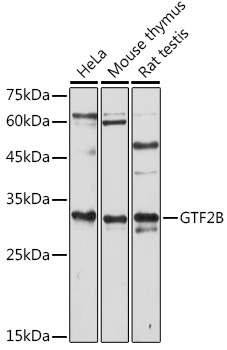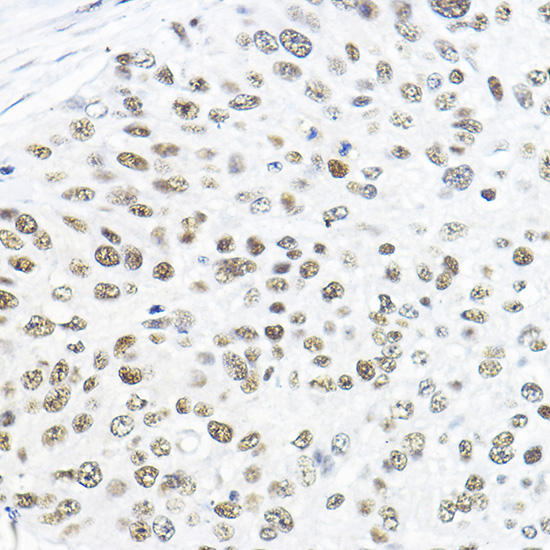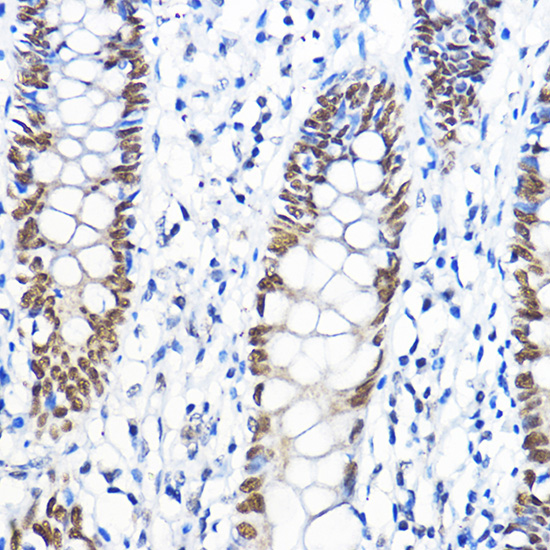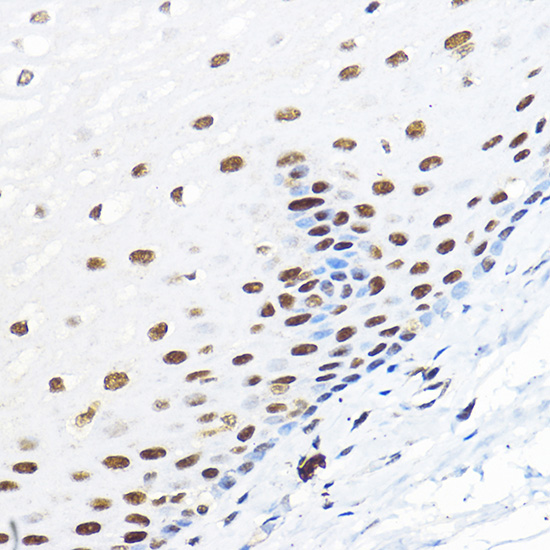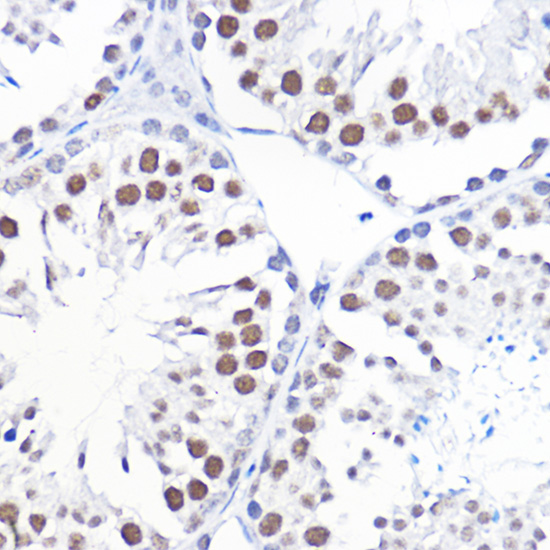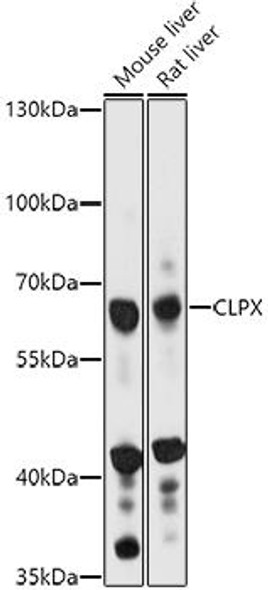Immunology Antibodies 2
Anti-GTF2B Antibody (CAB1708)
- SKU:
- CAB1708
- Product Type:
- Antibody
- Reactivity:
- Human
- Reactivity:
- Mouse
- Reactivity:
- Rat
- Host Species:
- Rabbit
- Isotype:
- IgG
- Antibody Type:
- Polyclonal Antibody
- Research Area:
- Immunology
Description
| Antibody Name: | Anti-GTF2B Antibody |
| Antibody SKU: | CAB1708 |
| Antibody Size: | 20uL, 50uL, 100uL |
| Application: | WB IHC IF |
| Reactivity: | Human, Mouse, Rat |
| Host Species: | Rabbit |
| Immunogen: | A synthetic peptide corresponding to a sequence within amino acids 50-150 of human GTF2B (NP_001505.1). |
| Application: | WB IHC IF |
| Recommended Dilution: | WB 1:500 - 1:2000 IHC 1:50 - 1:200 IF 1:50 - 1:200 |
| Reactivity: | Human, Mouse, Rat |
| Positive Samples: | HeLa, Mouse thymus, Rat testis |
| Immunogen: | A synthetic peptide corresponding to a sequence within amino acids 50-150 of human GTF2B (NP_001505.1). |
| Purification Method: | Affinity purification |
| Storage Buffer: | Store at -20'C. Avoid freeze / thaw cycles. Buffer: PBS with 0.02% sodium azide, 50% glycerol, pH7.3. |
| Isotype: | IgG |
| Sequence: | SEWR TFSN DKAT KDPS RVGD SQNP LLSD GDLS TMIG KGTG AASF DEFG NSKY QNRR TMSS SDRA MMNA FKEI TTMA DRIN LPRN IVDR TNNL FKQV YEQK S |
| Gene ID: | 2959 |
| Uniprot: | Q00403 |
| Cellular Location: | Nucleus |
| Calculated MW: | 34kDa |
| Observed MW: | 32KDa |
| Synonyms: | GTF2B, TF2B, TFIIB |
| Background: | This gene encodes the general transcription factor IIB, one of the ubiquitous factors required for transcription initiation by RNA polymerase II. The protein localizes to the nucleus where it forms a complex (the DAB complex) with transcription factors IID and IIA. Transcription factor IIB serves as a bridge between IID, the factor which initially recognizes the promoter sequence, and RNA polymerase II. |
| UniProt Protein Function: | GTF2B: General factor that plays a major role in the activation of eukaryotic genes transcribed by RNA polymerase II. Associates with TFIID-IIA (DA complex) to form TFIID-IIA- IIB (DAB-complex) which is then recognized by polymerase II. Interacts with the transcription elongation factor TCEA2. Interacts with HIV-1 Vpr. Interacts with GPBP1. Interacts with Epstein-Barr virus EBNA2. Belongs to the TFIIB family. |
| UniProt Protein Details: | Protein type:Acetyltransferase; Nuclear receptor co-regulator; Transcription factor Chromosomal Location of Human Ortholog: 1p22-p21 Cellular Component: nucleolus; nucleoplasm; nucleus Molecular Function:protein binding; thyroid hormone receptor binding; transcription factor binding Biological Process: RNA elongation from RNA polymerase II promoter; snRNA transcription from RNA polymerase II promoter; transcription from RNA polymerase II promoter; transcription initiation from RNA polymerase II promoter |
| NCBI Summary: | This gene encodes the general transcription factor IIB, one of the ubiquitous factors required for transcription initiation by RNA polymerase II. The protein localizes to the nucleus where it forms a complex (the DAB complex) with transcription factors IID and IIA. Transcription factor IIB serves as a bridge between IID, the factor which initially recognizes the promoter sequence, and RNA polymerase II. [provided by RefSeq, Jul 2008] |
| UniProt Code: | Q00403 |
| NCBI GenInfo Identifier: | 135629 |
| NCBI Gene ID: | 2959 |
| NCBI Accession: | Q00403.1 |
| UniProt Secondary Accession: | Q00403,Q5JS30, A8K1A7, |
| UniProt Related Accession: | Q00403 |
| Molecular Weight: | 34,833 Da |
| NCBI Full Name: | Transcription initiation factor IIB |
| NCBI Synonym Full Names: | general transcription factor IIB |
| NCBI Official Symbol: | GTF2B |
| NCBI Official Synonym Symbols: | TF2B; TFIIB |
| NCBI Protein Information: | transcription initiation factor IIB |
| UniProt Protein Name: | Transcription initiation factor IIB |
| UniProt Synonym Protein Names: | General transcription factor TFIIB; S300-II |
| Protein Family: | Transcription initiation factor |
| UniProt Gene Name: | GTF2B |
| UniProt Entry Name: | TF2B_HUMAN |
View AllClose


